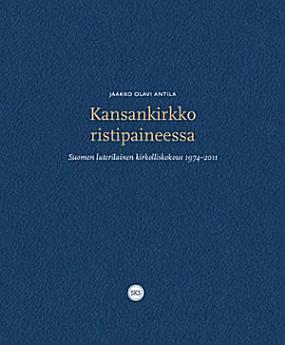Kansankirkko ristipaineessa: Suomen luterilainen kirkolliskokous 1974-2011
O ovoj e-knjizi
The reformed General Synod got underway in 1974 with biannual gatherings. It was a body consisting of 108 members, including lay representatives, clergymen and the bishops. The General Synod retained its right to decide on ecclesiastical books and continued to hold the sole right to make proposals regarding the Church Act. A new task was to decide on the budget of the entire Church organisation and to steer the activities of the Church as a whole. Additionally, the General Synod received the general authority to handle any issues related to faith and doctrine, such as ecumenical issues.
The book Kansankirkko ristipaineessa (A national folk church under conflicting pressures) takes a close look at the General Synod representatives during the years 1974â2011 and clarifies who the members of the Synod were, how they were elected and what they achieved. The study examines which of these persons held the most power, and what types of coalitions stood out within the work of the General Synod.
In addition, the book aims to provide a general overall picture of the General Synod in relation to the Church, economic life, legislation, theological dialogue and the media. The study examines how well the intentions that drove the reform of the General Synod were realised and whether the General Synod was actually progressing as slowly or as briskly as expressed by different observers at different times.
Discussions surrounding female ordination, sexual ethics and ecclesiastical books indicate the position of the General Synod within an increasingly diversified society. During the first decade of the 2000s, the General Synod experienced a similar revolution in terms of values as it had when preparing the reform of the Synod around the turn of the 1960s and 70s. The Church began to find itself once again in a missionary situation.








